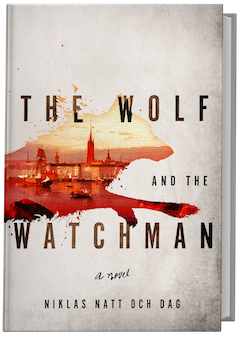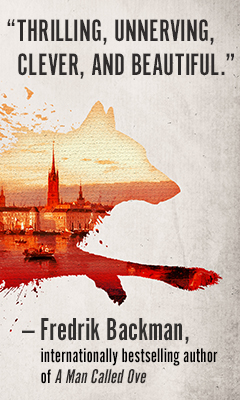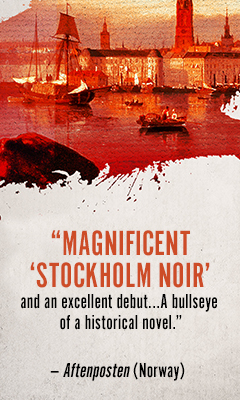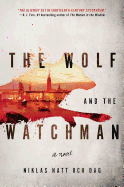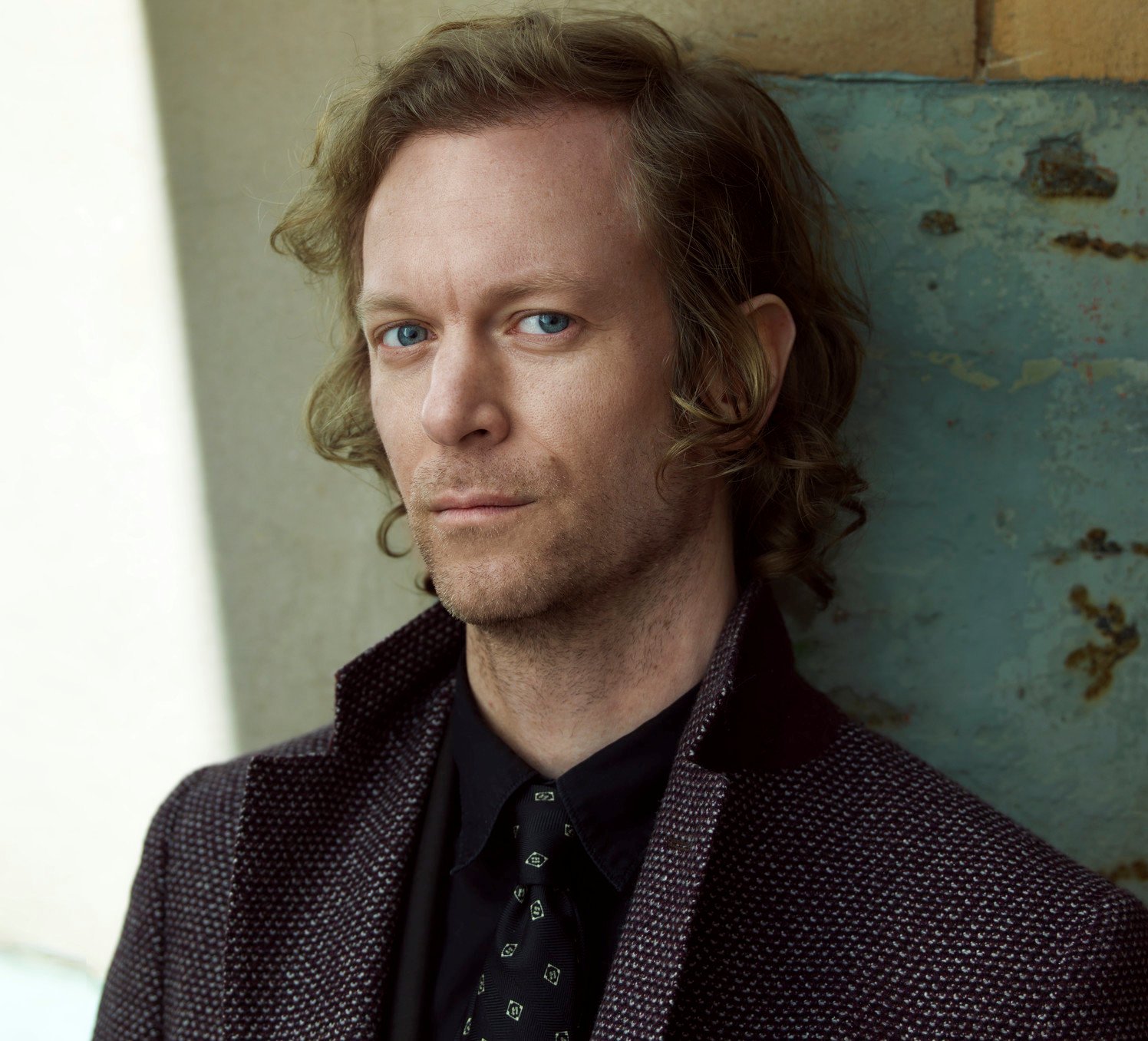The Wolf and the Watchman
by Niklas Natt och Dag
Four seasons in 1793 Stockholm provide the backdrop for Niklas Natt och Dag's riveting, labyrinthine first novel, The Wolf and the Watchman. This spellbinding "historical noir" takes place one year after the murder of King Gustav III. The crown prince is only 13 years old, not yet of age to rule. Thus, Sweden--wracked by chaos, paranoia and political power plays--is dominated by a puppet regent who is controlled by an oppressive lord, Gustaf Adolf Reuterholm. The times are bleak, violent and turbulent. Hate is rampant and people plot one another's downfall. The proverbial wolf waits around every dark corner.
This rich, atmospheric story follows a reverse chronological timeline that begins in autumn 1793 in Cellar Hamburg, where the condemned are served a last drink before setting off for the gallows. Both the "city and state teeter on the brink of ruin. The fine houses around the lake have long since been repurposed into manufactories. The workshops throw their waste directly into the water, and the fenced section intended for human waste is overflowing and ignored by most." Just before dawn, Mickel Cardell, a veteran who returned from war three years before, robbed of "one arm and one friend poorer," is roused from sleep. The solitary soldier with a prosthetic wooden arm is now a watchman who drinks too much. Once awakened, he is alerted to a body floating in Lake Larder on the Southern Isle. Cardell soon recovers a mutilated, malnourished human body--that of a male, missing both arms and both legs. The face is missing both eyes and torn lips cover a mouth devoid of teeth.
The mystery of this corpse's identity and the motive for the gruesome nature of what appears to be murder form the foundation of this complex, engrossing whodunit. Cardell partners with Cecil Winge, a lawyer who is asked by the chief of police to investigate the corpse and the nature of the death. Winge is an intellectual idealist, a "master of logical argumentation" known for standing up for his beliefs and convictions. He upholds "justice and reason when others simply wish to better themselves."
The two men, disparate in personality, share a complementary work ethic. Together, they theorize that the corpse did not spend much time in the lake. Based on the state of the injuries, they conclude that prior to the body being dumped, the victim was likely tortured over many months. The arms and legs were shorn away one at a time and there were periods of healing between amputations. They quickly realize this is not the work "of an ordinary perpetrator."
Cardell and Winge, on a quest to make sense of the death and find the killer, drop public hints to lure out information. In doing so, they pursue leads that send them into decrepit shantytowns rife with poverty, plagues, debauchery and thievery, and toward some seedy, unforgettable characters. As clues to the identity of the victim gradually emerge, danger stalks the duo.
During their search, letters penned in summer 1793 are discovered. Their author, Kristofer Blix, is a handsome 17-year-old from Stockholm. The youth--once an apprentice to a navy surgeon--has aspirations beyond his means and birthright. His ambitions, coupled with his innocent naiveté, entice him into a world filled with gamblers, forgers and swindlers. He is ultimately sold into slavery to pay off his debts and exiled from the city, held captive by a madman and his bloodthirsty dog. Blix is forced to commit horrendous acts whose macabre nature corrode his soul. Where is Blix now? And might he and the actions described in his narrative tie in with the murder?
Blix's letters lead the investigators to a young woman, Anna Stina, whose life changed dramatically during spring 1793, when she was a resident of downtrodden Katerina Parish. While Anna nursed her dying mother, a suitor proposed marriage. When Anna declined, she unleashed her suitor's bestial wrath and later, shamed, was painted as an opportunist and summoned before the church tribunal, where she was charged with "whoring and intent to lure the innocent into sin." Wicked forces, including those within the church, conspired to destroy her. Found guilty, she was sent to a house of correction, where she learned the "art of hatred" from a tyrannical, degenerate custodian. Can Anna Stina escape her cruel fate? Do her dismal circumstances somehow connect to the murder as well?
The investigative efforts of Cardell and Winge reveal clues that entwine these rich, multilayered and suspenseful stories of good lives gone miserably astray and how they may--or may not--relate to the body in the lake. The insidious nature of evil pervasive in all echelons of society and startling visions of hell abound in The Wolf and the Watchman. Natt och Dag unspools an adventurous, propulsive narrative that blurs the line between good and evil. --Kathleen Gerard



